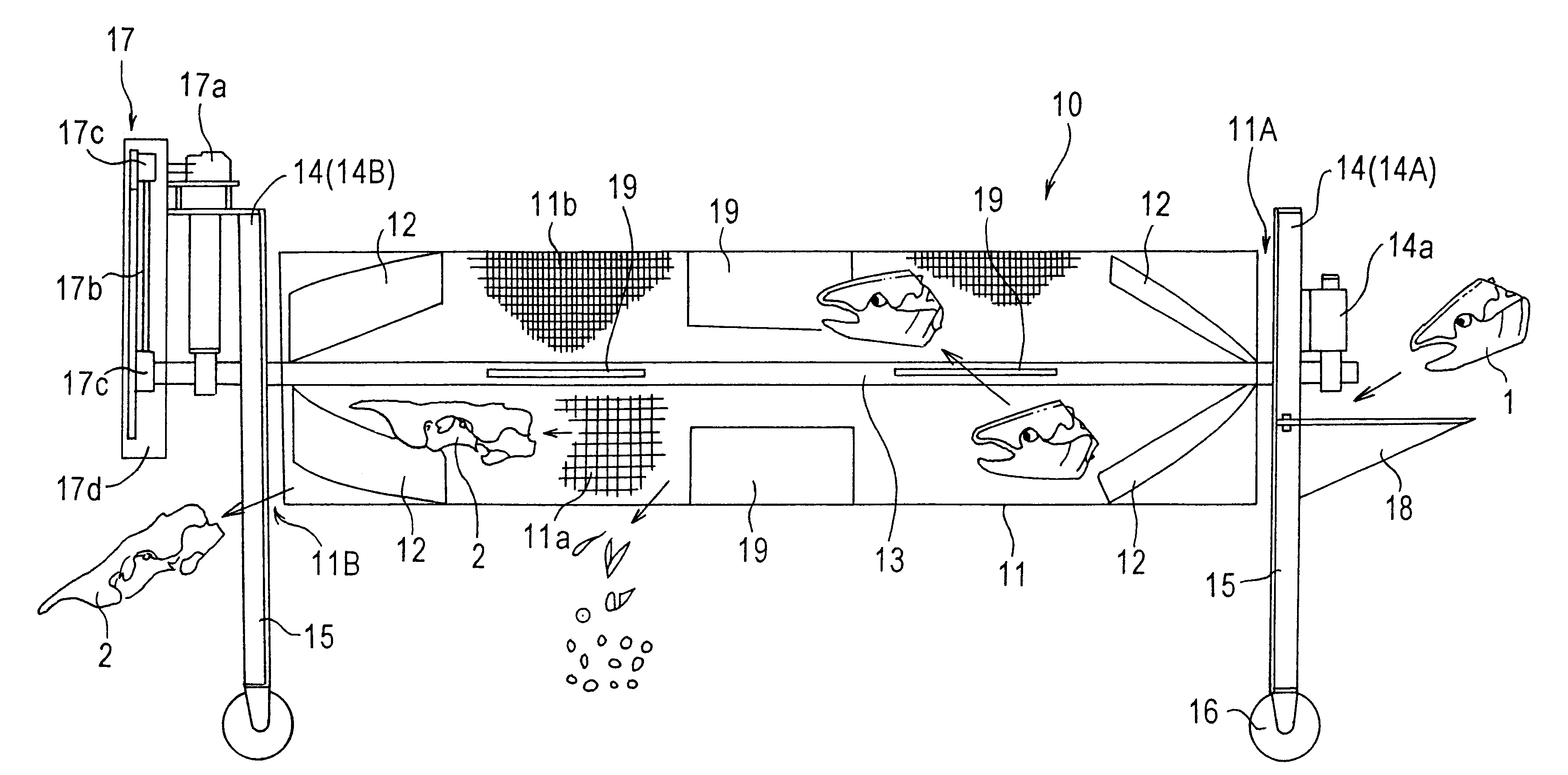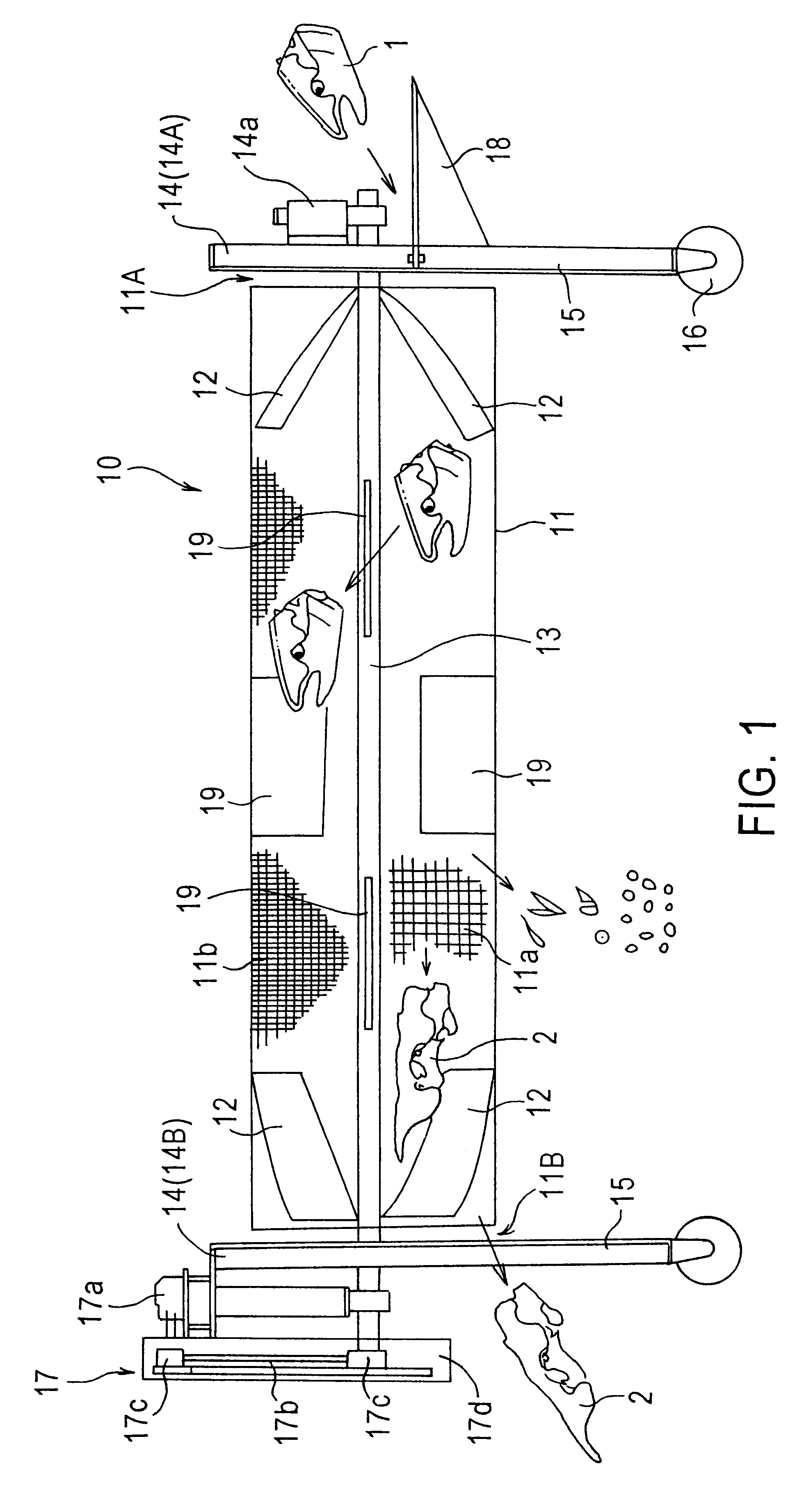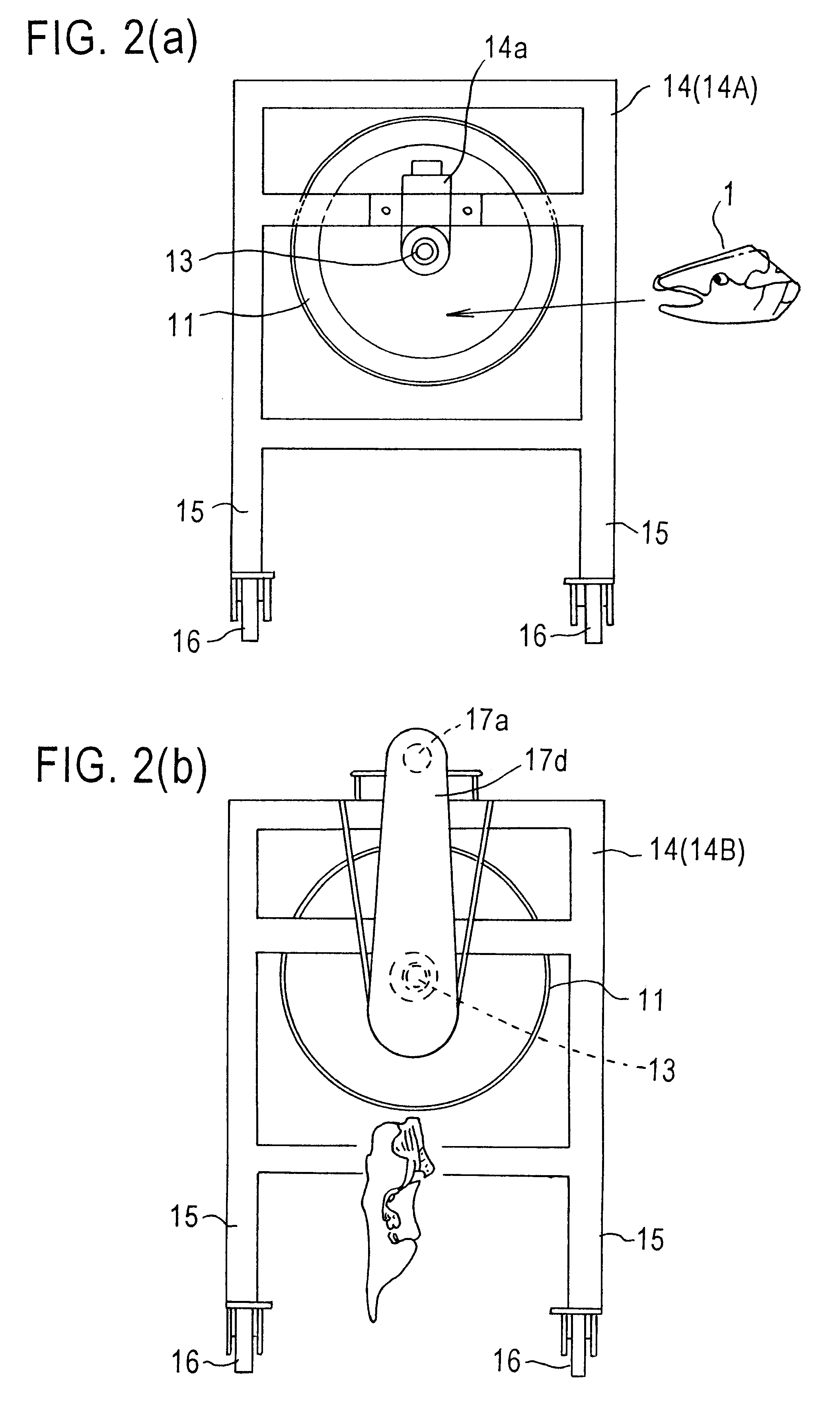Method for processing fish heads and apparatus for separating processed fish heads
a technology for processing fish and fish heads, applied in fish processing, meat processing devices, fish filleting, etc., can solve the problems of reducing the consumption of so-called salted salmon with the head intact, reducing the social value of disposal of such waste, and becoming difficult to acquire shark cartilag
- Summary
- Abstract
- Description
- Claims
- Application Information
AI Technical Summary
Benefits of technology
Problems solved by technology
Method used
Image
Examples
Embodiment Construction
This apparatus mainly comprises the separation unit 10, which is shown in FIG. 1 and FIG. 2, and the heating unit 20, which is shown in FIG. 3.
In the separation unit 10 there is a rotary drum 11 that has a circular cylindrical shape. The surface of this rotary drum 11 is a round net-like body, like a wire netting or a punchboard, that is open at both ends 11A and 11B. As shown in FIG. 1, which depicts an example of an embodiment of this invention, the shapes of the reticular openings of this net-like body range from large rectangular ones 11a and small rectangular ones 11b. However, it is possible for the reticular openings to be, in addition to the rectangular shapes 11a and 11b, of various other shapes, such as a polygonal shape like a rhomboid, or a half-circle, circle, or oval, among others. It also is possible for a plurality of the above-described shapes to be combined.
A shaft 13 is placed inside and affixed to this rotary drum 11 through the support members 12 at the axial ce...
PUM
 Login to View More
Login to View More Abstract
Description
Claims
Application Information
 Login to View More
Login to View More - R&D
- Intellectual Property
- Life Sciences
- Materials
- Tech Scout
- Unparalleled Data Quality
- Higher Quality Content
- 60% Fewer Hallucinations
Browse by: Latest US Patents, China's latest patents, Technical Efficacy Thesaurus, Application Domain, Technology Topic, Popular Technical Reports.
© 2025 PatSnap. All rights reserved.Legal|Privacy policy|Modern Slavery Act Transparency Statement|Sitemap|About US| Contact US: help@patsnap.com



